To fix QuickBooks Error 6000 83, try renaming the .ND and .TLG files, moving the company file to a different location, or using the QuickBooks Tool Hub to run the File Doctor tool. These solutions address common issues like file corruption or permission conflicts that can prevent a company file from restoring.
QuickBooks Error 6000 83 generally occurs when the software fails to access or restore a company file located on a local or network drive. This error often indicates damage in the company file, restricted folder access, or an incorrect hosting setup on multiple systems. In some cases, it may appear during backup creation or when restoring from a portable file.
This article explains the main causes and observable effects of Error 6000 83, followed by step-by-step troubleshooting procedures for both Windows and Linux environments. It provides technical instructions for correcting network configuration, adjusting file permissions, and restoring data safely without risking further corruption.
The guide also includes best practices to prevent reoccurrence by maintaining verified backups, updating QuickBooks Desktop, and ensuring secure server access for multi-user setups. Together, these methods form a structured and reliable process for resolving QuickBooks Error 6000 83 and restoring full functionality to your accounting environment.
What is QuickBooks Error 6000 83 & How Does it Looks When it Occurs?
QuickBooks Error 6000 83 appears when the software cannot open or restore the company file due to file damage, restricted access, or improper network configuration. When this issue occurs, QuickBooks displays an error message stating:
“An error occurred when QuickBooks tried to access the company file. Please try again. If the problem persists, contact Intuit Technical Support and provide them with the following error codes: (-6000, -83).”
This message indicates that QuickBooks cannot reach the company file in its current location or format, requiring file or network troubleshooting before it can be opened successfully.

What are the Causing Roots Behind the QuickBooks Error 6000 83
The following factors might be responsible for the occurrence of QuickBooks error 6000 83:
- Damaged or Corrupted Company File: If the company file (.QBW) is damaged or corrupted, QuickBooks may encounter difficulty accessing it, leading to Error Code 6000 83.
- Incomplete or Proper Installation: If QuickBooks is installed correctly or if certain installation files are missing or damaged, it can result in this error.
- Server Access Issues: If the server access for the file is not proper, it can lead to an error.
- Corrupted Folder: If the folder consisting of the company file is corrupted, it can also cause an error.
- Restrictions by Malware: The error may be caused by insufficient permissions for Windows users or when the files are restricted by the firewall or security software.
- Enabled Hosting Mode: Hosting mode being accessible on multiple systems can also lead to this error.
- Incorrect File Extension: The error may arise due to the wrong QuickBooks company file extension, such as .qbm or .qbb rather than .qbw
How Can We Identify the Effect of QuickBooks Error 6000 83
QuickBooks error 6000 83 can be identified by noticing the following signs mentioned below:
- Error message displaying a 4-digit error code, such as 6000, -77, -80, -83, -301, etc.
- QuickBooks crashes or freezes when attempting to access the company file.
- QuickBooks slows down when working on the company file.
- Inability to switch to multi-user mode or difficulty accessing the company file in multi-user mode.
- The error can cause periodic freezing of the system or QuickBooks desktop.
- The Windows operating system may experience sluggish performance, with unresponsiveness to mouse and keyboard inputs.
- The error can lead to data loss or corruption of the company file.
- The error can prevent you from opening your company file, which can cause delays in your work.
Customized Solution for QuickBooks Error 6000 83
Before moving to the actual solutions, you can try the following customized solution for QuickBooks Error 6000 83:
- Check your network connection: Ensure that your network connection is stable and working correctly. If you have an internet connection which is wireless, try switching to a wired connection.
- Restart your computer: Restarting your computer can help resolve many software-related issues, including QuickBooks Error 6000 83.
- Update QuickBooks: Make sure that you are using the latest version of QuickBooks. Updating the software can often fix bugs and issues.
- Disable antivirus software: Turn off your antivirus software temporarily and try opening the company file again. If the error is resolved, add QuickBooks to your antivirus software’s exception list.
- Restore a backup of the company file: If you have a backup of your company file, restore it to resolve the error. If you don’t have a backup, you can try creating a new company file and importing your data into it.
If the error persists after performing these checks, proceed to the detailed solutions below.
Advanced Solutions for QuickBooks Error 6000 83
If QuickBooks Error 6000 83 continues after basic troubleshooting, apply the following advanced methods. These solutions are arranged from file-level corrections to more complex server configuration adjustments.
File-Level Solutions for QuickBooks Error 6000 83
These file-level fixes address damaged configuration files, restricted network access, and permission conflicts that commonly cause QuickBooks Error 6000 83. Perform each step in order before moving on to the backup and server configuration sections.
- Rename the .ND and .TLG files: Locate the folder containing the company file, and look for files with the same name as the company file but with extensions .ND and .TLG (e.g., companyfile.qbw.ND). Rename these files by adding the word “OLD” to the end of the file name (e.g., companyfile.qbw.ND.OLD).
- Check your Firewall Settings: Ensure that your firewall settings are not blocking QuickBooks from accessing the company file. You can temporarily turn off your firewall and check if the error is resolved.
- Run QuickBooks File Doctor: QuickBooks File Doctor is a diagnostic tool that can help resolve issues with your company file. Download and run the tool to scan your company file and fix any issues it finds.
After running the File Doctor, reopen QuickBooks and check if the company file can be accessed successfully. If not, continue with the specific conditions below.
Backup and Restore Procedures
Follow these steps to fix QuickBooks Error 6000 83 that occurs while creating or restoring a backup of your company file. These methods help ensure your data file is stored correctly and free from file name, folder, or network-related conflicts.
1. Create a Backup of Your Company File
- Make sure your company file is stored on your local hard drive (C:) and not on a server. If it is on a server, move it temporarily to your local drive.
- Open QuickBooks Desktop.
- From the File menu, select Quit QuickBooks Desktop on the server that hosts your company file.
- Open the Windows Start menu and search for File Explorer.
- In File Explorer, go to This PC or My Computer, then open your C: drive.
- Create a new folder with a simple name such as QB Test Folder.
- Create a backup of your company file and save it inside this new folder.
- Use the newly created backup file to restore your company data in QuickBooks.
If the error message no longer appears, you can continue using this restored company file as your main working file.
2. Restore the Backup File
- Open QuickBooks Desktop.
- From the File menu, select Open or Restore Company and then click Restore a Backup Copy.
- Choose the Local Backup option and click Next.
- Browse to locate your backup file stored in the C: drive or in the folder you created.
- Select the file and follow the on-screen prompts to complete the restoration.
If you still encounter the error, review the backup file and its folder names to ensure they meet QuickBooks’ naming standards.
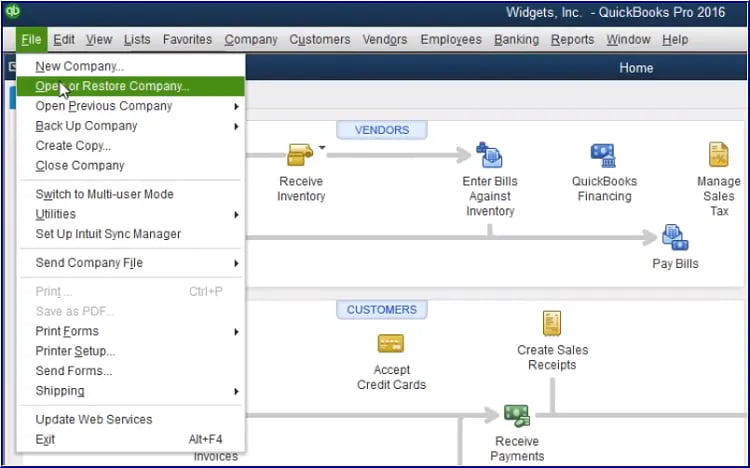
3. Rename the File and Folder
Error 6000 83 can occur if the company file or its containing folder includes special characters, symbols, or spaces in the name.
Follow these steps to rename properly:
- Open File Explorer and locate the backup file ending in .QBB.
- Right-click on the file and choose Rename.
- Remove all special characters, symbols, or spaces in the file name.
- Check the folder name containing the backup file and remove any spaces or special characters there as well.
- Save the changes and attempt to restore the file again in QuickBooks.
4. Create a Portable Company File
Creating a portable company file helps rebuild and restore your data in a clean format.
- Open QuickBooks Desktop and log in with your credentials.
- Go to the File menu and choose Create Copy.
- Select Portable Company File, then click Next.
- Save the portable file in an easily accessible folder on your local drive and give it a clear, simple name.
- Click Save, then OK to confirm.
- The new file will have a .QBM extension. Use this file to restore your company data through the Open or Restore Company option.

If the backup and restore process does not eliminate QuickBooks Error 6000 83, proceed to the Server Configuration Fixes section for advanced troubleshooting steps involving Windows or Linux servers.
Server Configuration Fixes (Windows and Linux)
Follow these advanced configuration methods if QuickBooks Error 6000 83 appears while the company file is hosted on a Windows or Linux server. These steps correct hosting conflicts, permission errors, and network path issues that can prevent QuickBooks Desktop from opening or restoring your company file.
Turn Off Hosting on Workstations
- Open QuickBooks Desktop on each workstation connected to the network.
- Go to the File menu and select Utilities.
- If you see Host Multi-User Access, move to the next workstation (this one is not hosting).
- If you see Stop Hosting Multi-User Access, select it.
- Repeat the process on every workstation to make sure only the main server computer hosts the company file.

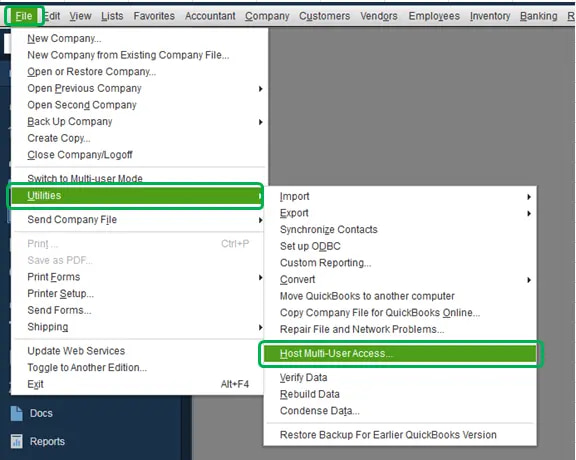
Use QuickBooks File Doctor
Use the QuickBooks File Doctor tool, as described earlier, to repair company-file damage and resolve any remaining network configuration issues.
After the scan finishes, reopen QuickBooks and test the company file. Restart your computer if prompted to apply the repairs.
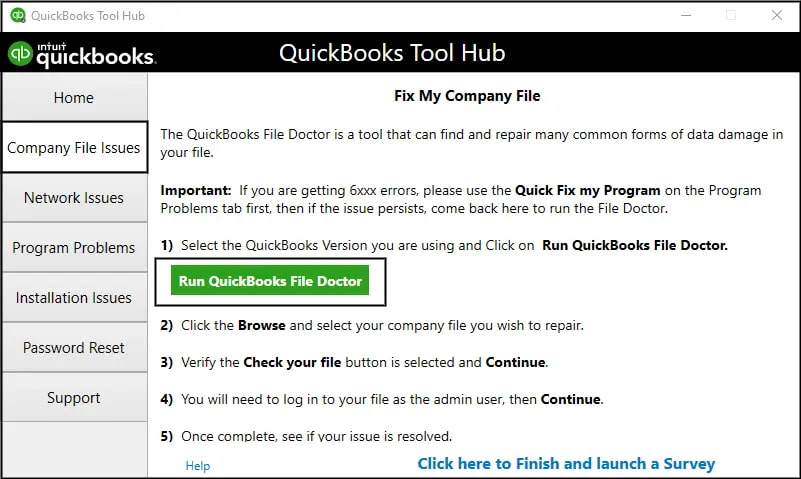
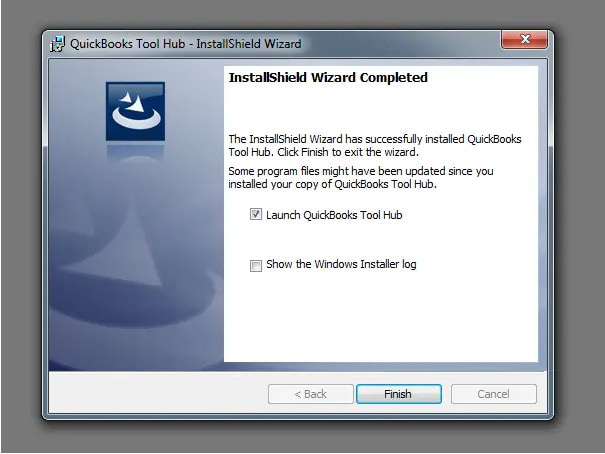
Edit the Host File for Network Configuration
Editing the host file ensures the workstations and server communicate correctly.
Step 1: Get Computer Names and IP Addresses
- On the server computer, press Windows + R, type cmd, and press Enter.
- Type ipconfig /all and press Enter.
- Note the Host Name and IPv4 Address.
- Repeat these steps on each workstation that accesses the company file.
Step 2: Edit the Host File
- Close QuickBooks on both the server and all workstations.
- Open the Windows Start menu, then navigate to one of these locations:
•C:\Windows\System32\Drivers\Etc
•C:\Windows\SysWOW64\Drivers\Etc - Right-click the hosts file and choose Open with > Notepad.
- At the end of the file, add each computer’s IP address followed by its computer name.
• On the server, enter each workstation’s IP and name.
• On each workstation, enter the server’s IP and name.
Use the Tab key to separate the values.
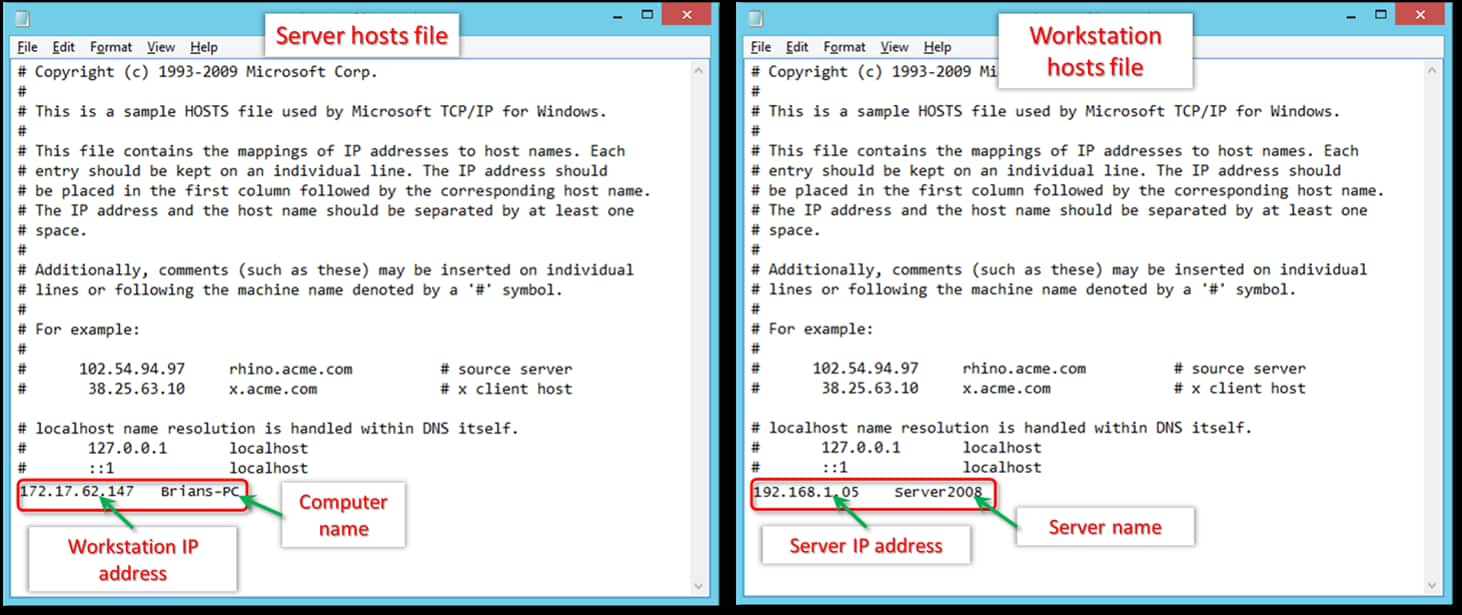
Step 3: Save the Updated Host File
- In Notepad, click File > Save As.
- Type “hosts” (include the quotation marks) and choose Desktop as the location.
- Right-click the saved file, choose Copy, and navigate back to the folder from Step 2.
- Locate the original hosts file, rename it to hosts old, and confirm.
- Paste the new file into the same folder.
Additional Steps for Linux Server
If your company file is stored on a Linux server, perform these steps instead of editing the Windows host file:
- Open the Linux Database Server Manager.
- Adjust the settings in the Initord.conf file for the Database Server Manager and directory.
- Restart QuickBooks on the host computer.
- Verify that the server name and IP address are correctly configured on all connected workstations by pinging the server.
- Once verified, open QuickBooks Desktop and access your company file.
If QuickBooks Error 6000 83 still appears after completing these configuration steps, contact QuickBooks Support for assistance with deeper network or permission diagnostics.
Wrapping Up!
In this post, we explained QuickBooks Error 6000 83, its common causes, and the most effective methods to fix it. By following the structured troubleshooting steps and applying the recommended solutions, you can quickly restore your company file and resume smooth accounting operations. Each method is designed to help you resolve the issue confidently and prevent it from reoccurring in the future.
If you still face challenges while performing any of the steps, our support team is ready to assist you in real time. Contact our QuickBooks experts anytime at the toll-free number 1-802-778-9005 for personalized help and guidance.
Frequently Asked Questions!
Why does QuickBooks Desktop warn me about my company file location even when I’m not trying to restore a backup?
In many cases, QuickBooks flags folder or hosting issues before you even attempt a restore. If your company files are stored in a restricted Windows folder, synced cloud folder (OneDrive, Dropbox, Google Drive), or a network share with partial permissions, QuickBooks may warn you because these locations can later cause restore failures—especially errors like 6000 83. It’s QuickBooks’ way of telling you your current setup may impact future file operations.
Can switching between workstations or moving my QB file between computers increase the chances of errors like 6000 83?
Yes. When different systems use different Windows permissions, antivirus rules, or network paths, QuickBooks may struggle to read or write the file. Many users run into problems right after moving a .QBW or .QBB from one machine to another—especially if it came from a USB drive, email attachment, or a cloud-synced folder. Keeping files on a stable, local location or properly hosted server minimizes these issues.
Is it risky to keep my company files inside cloud sync folders like OneDrive or Dropbox?
For backup storage, it’s fine. But for active company files, it’s a major issue. These services lock, sync, and rewrite files in the background, which can interrupt QuickBooks during tasks like verifying, backing up, or restoring. This is one of the most common patterns behind file-based errors users report, including issues closely related to error 6000-series. QuickBooks files should always live in a stable, non-syncing local or server folder.
Can I bypass Error 6000 83 by restoring the file locally first?
Yes, and this is actually one of the best ways to isolate the problem. If you are trying to restore your backup directly to a server or a network drive and getting Error 6000 83, try restoring the file to your local desktop (C: drive) first.
This removes the network, firewall, and server permissions from the equation. If the restore works locally, you know your backup file is healthy.
You can then simply copy the restored Company File (.qbw) and paste it into your server folder manually, bypassing the restoration process over the network entirely.
Could my antivirus or security software be triggering Error 6000 83 during a restore?
Absolutely. When you restore a company file, QuickBooks is essentially unzipping a massive amount of data and writing it to your hard drive. Aggressive security software (like Bitdefender, Malwarebytes, or Windows Defender) often flags this rapid creation of files as suspicious activity or ransomware behavior.
What to do: Temporarily pause your real-time protection while restoring the file. If the error vanishes, you need to add the specific QuickBooks folder path to your antivirus exclusion list to prevent future conflicts.
I’m seeing Error 6000 83, but is my actual backup data corrupted?
Likely not. It is easy to panic, but Error 6000 83 is almost exclusively a connectivity and permissions issue, not a data corruption issue. It means QuickBooks is having trouble communicating with the location where you are trying to put the file, or the “QBDatabaseUser” service doesn’t have the rights to write to that folder.
Note: If the data were actually corrupted, you would typically see C-series errors (like C-224) or an assertion failed error, not a 6000 series code.
Disclaimer: The information outlined above for “How to Fix QuickBooks Error 6000 83 – While Restoring Company File?” is applicable to all supported versions, including QuickBooks Desktop Pro, Premier, Accountant, and Enterprise. It is designed to work with operating systems such as Windows 7, 10, and 11, as well as macOS.
